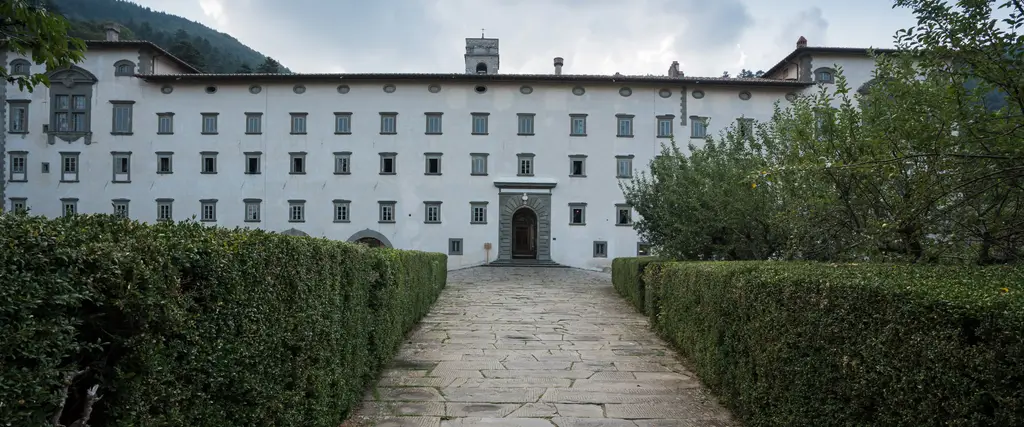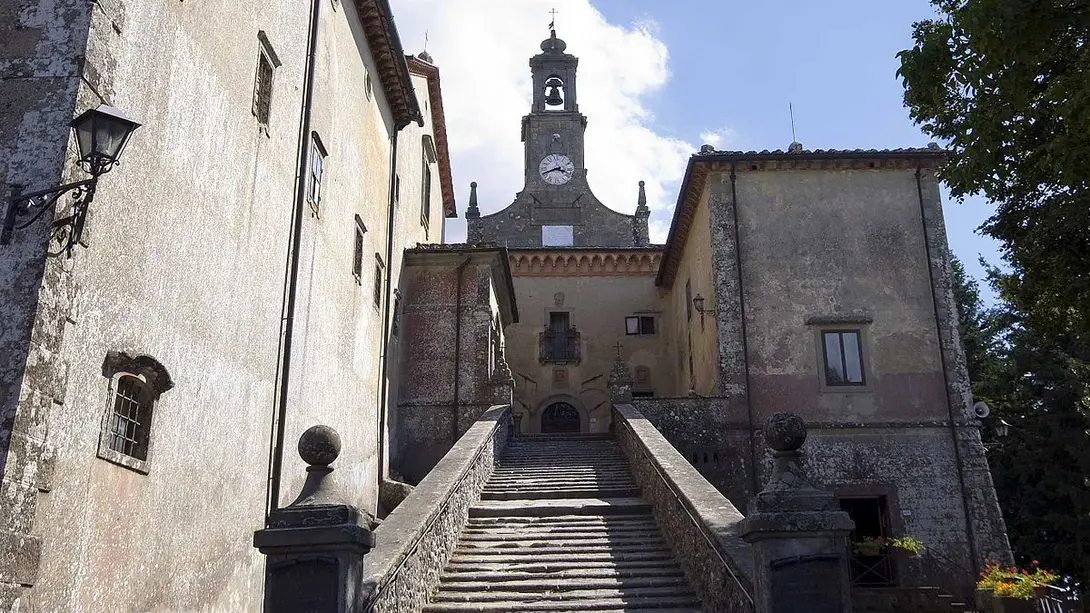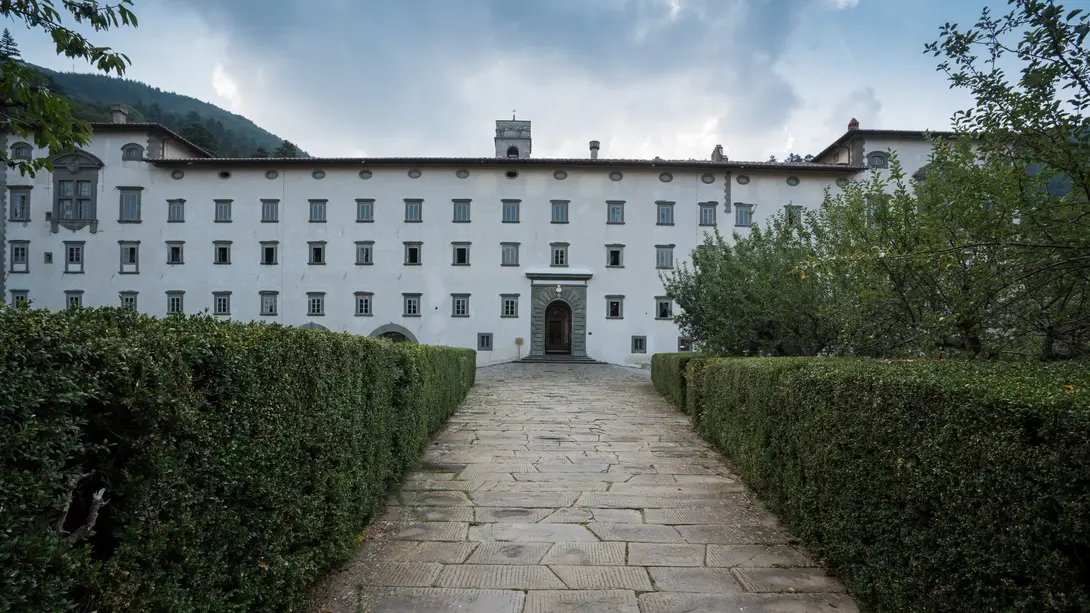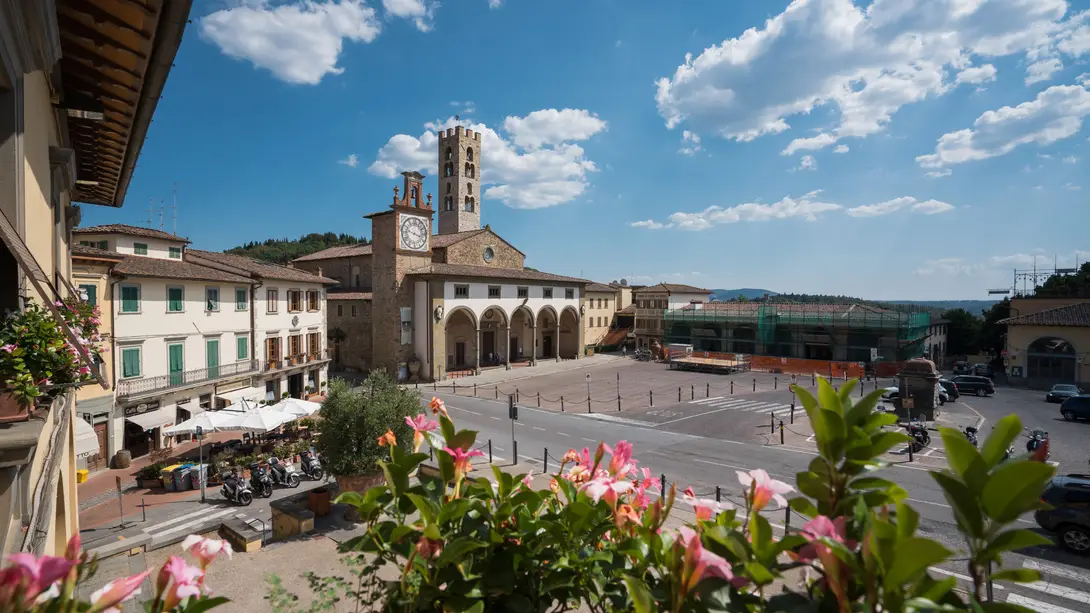
Sanctuaries and Monasteries
This itinerary is for everyone, especially for clergymen and art lovers interested in discovering historical places and their natural surroundings. Religiousness has always been part of our culture, an important element reflected in art and architecture. Take the chance to discover all these aspects strictly connected to one another: explore ancient sanctuaries and monasteries!
Here are four places very close to Florence, both for geographical and historical reasons.
The famous Certosa di Firenze or Certosa del Galluzzo, is a place of worship and prayer, located on Mount Acuto (near the Galluzzo district). Niccolò Acciaiuoli commissioned the imposing complex in 1341: he was banker and ambassador to the Angevin Court of the Kingdom of Naples, in the second half of the fourteenth century. The building underwent numerous changes in style and artworks through the centuries, so many artists worked on it, the most famous was Pontormo. When the plague struck Florence, in 1523, the painter took refuge in this isolated place and painted frescoes in the Great Cloister, which can now be seen – along with a substantial collection of 14th-18th-century works of art – in the monastery’s art gallery. Visiting the Certosa is not only an artistic experience, but also a full immersion in the nature, due to its location in the beautiful green landscape. Inhabited first by Cistercians and then by Dominicans, it is now looked after by the Community of San Leolino.
One of the most famous and appreciated by Florentines is the Convent of Monte Senario, north of Florence, in an extremely panoramic position, overlooking the city and the Mugello valley. Surrounded by a forest of fir trees, it dates back to 1291, as a first settlement of very humble cells, a small group of Florentine nobles - called seven founding saints – retreated into a hermit’s life, taking the name of Servants of Mary. In 1412, after an earthquake, the convent was newly built, and later modifications and expansions led to the present architectural complex. A trip to Monte Senario is a pleasant walk surrounded by nature, as well as an opportunity for pilgrimage.
Austere and elegant, the impressive Abbey of Vallombrosa has been a spiritual place since 1036. Its founder, Saint John Gualberto - Benedictine monk and founder of the Vallombrosian order - retreated in these dense woods in hermitage. The complex extended more and more until the end of the 15th century, as a great economic development left its deep trace in the grandeur of the present Abbey. Part of the complex are the numerous chapels scattered among the trees. Enjoy a day trip in this magic place.
The last stop of our route is the Basilica of Santa Maria all'Impruneta, in the centre of the village, surrounded by vineyards and rolling hills. The basilica, in Renaissance style, has always been a pilgrimage destination, because of the sacred image of the Virgin Mary, brought by Saint Romulus during the first Christianization. The image was very popular during the Black Plague in 1348: a solemn procession used to follow the image of the Virgin from Impruneta to Florence, with important benefits in reducing contagion.
Comune di Firenze
The places
Stages
Certosa del Galluzzo
Large monastic complex founded in 1342 by the Florentine banker Niccolò Acciaioli, which stands on a hill a few kilometers south of Florence. The complex underwent major remodelling at the end of the fifteenth century (cloisters) and the sixteenth century (church and square in front), in 1957 it passed from the Carthusians to the Cistercians and in2017 to San LeolinoCommunity, composed by lay and religious people, who work for the spiritual and cultural promotion of the Monastery.
In addition to the Church of San Lorenzo, the visit includes the big cloister (overlooked by the 18 cells of the monks), the chapter house, the refectory, the guesthouse. In the art gallery you can admire the lunettes depicting the Passion of Christ frescoed by Pontormo in 1523.
Monte Senario
The Sanctuary of Monte Senario is located in a highly suggestive context: an isolated promontory, an oasis of greenery with a 360 ° view that includes the entire Mugello valley and the Tuscan-Emilian Apennines. The hermitage is one of the most important in the whole territory and according to tradition it was founded on 8 September 1233, when, on the day of the Nativity of Mary, seven Florentine monks, abandoning their wealthy life, retired to hermit life by founding the Order of the servants of Mary.
The complex was enlarged and enriched by Cosimo I De' Medici in 1539, then renovated in Baroque forms in 1717.
Inside the church there are valuable paintings including an Adoration of the Magi by Cigoli, in addition to the splendid wooden choir of 1707, carved in elegant Baroque forms. The refectory hosts Matteo Rosselli's Last Supper.
Not far from the church there are some caves that were the first houses, the first places of meditation for the Seven Holy Founders.
Vallombrosa Abbey
The Vallombrosa abbey is very ancient, it was founded in 1036 by San Giovanni Gualberto, a Benedictine monk, founder of the Vallombrosano order based on austere common life, poverty, refusal of gifts and protections.
Originally the complex was different from now, but over time it expanded to take on its current appearance at the end of the fifteenth century. The mighty tower was built in the sixteenth century; the facade of the church is seventeenth-century, while the interior decoration was completed in the following century.
In the dense woods, which in fact was chosen as a hermitage by San Giovanni Gualberto, there are chapels and tabernacles with stories from the life of the saint, made between the 16th and 17th centuries. The tower also houses a Museum of sacred art.
Basilica di Santa Maria all'Impruneta
The Basilica of Santa Maria all’Impruneta is one of Tuscany’s three best-known Marian sanctuaries. Its fame rests on the cult of a much-venerated effigy and on the traditional history of its loss and subsequent miraculous recovery.
Tradition has it that a sacred image of the Virgin painted by the apostle Luke was brought to Tuscany in the third century by Saint Romulus and his acolytes, but then hidden underground for fear of persecution. The legend of its recovery was first recorded in writing by a l4th-century priest named Stefano Buondelmonti and in marble by an as yet unidentified l5th-century Tuscan sculptor in the form of an antependium for the Saint Mary altar, now exhibited in the sanctuary Treasury.
The consecration of the church was on 3rd January 1060. Gradually throughout the fourteenth century the edifice was transformed from parish church into a sanctuary centred on the cult of the miraculous effigy.
The interior was rebuilt on the model of Santissima Annunziata by architect Alessandro Saller, who installed an opulent carved, painted, gilded and coffered wooden ceiling, finished in 1717.
The useless and mindless aerial bombing of 27th and 28th July 1944 destroyed a large part of the buildings and destroyed or severely damaged many works of art. Only the effigy itself was unscathed.
On the occasion of the Jubilee 2025, the Basilica of Impruneta is a jubilee church.



